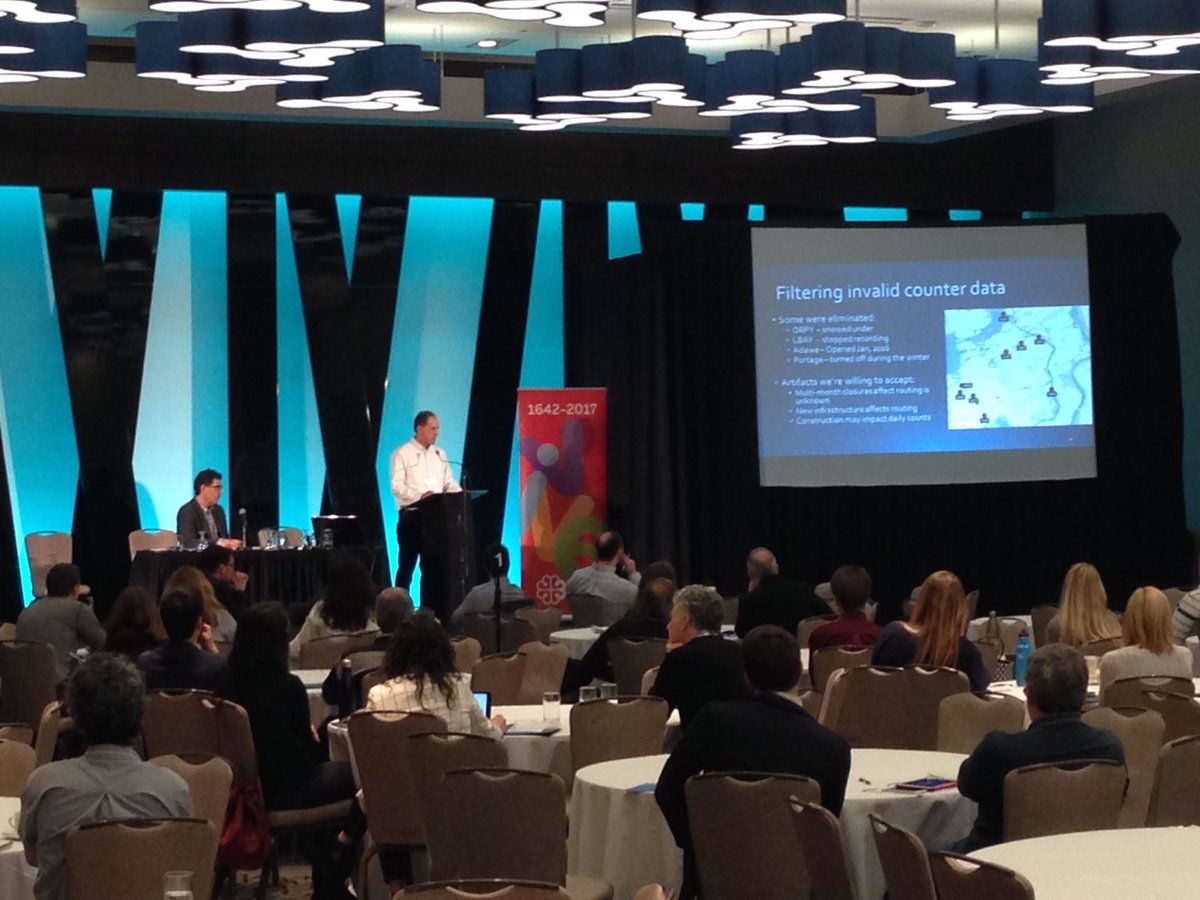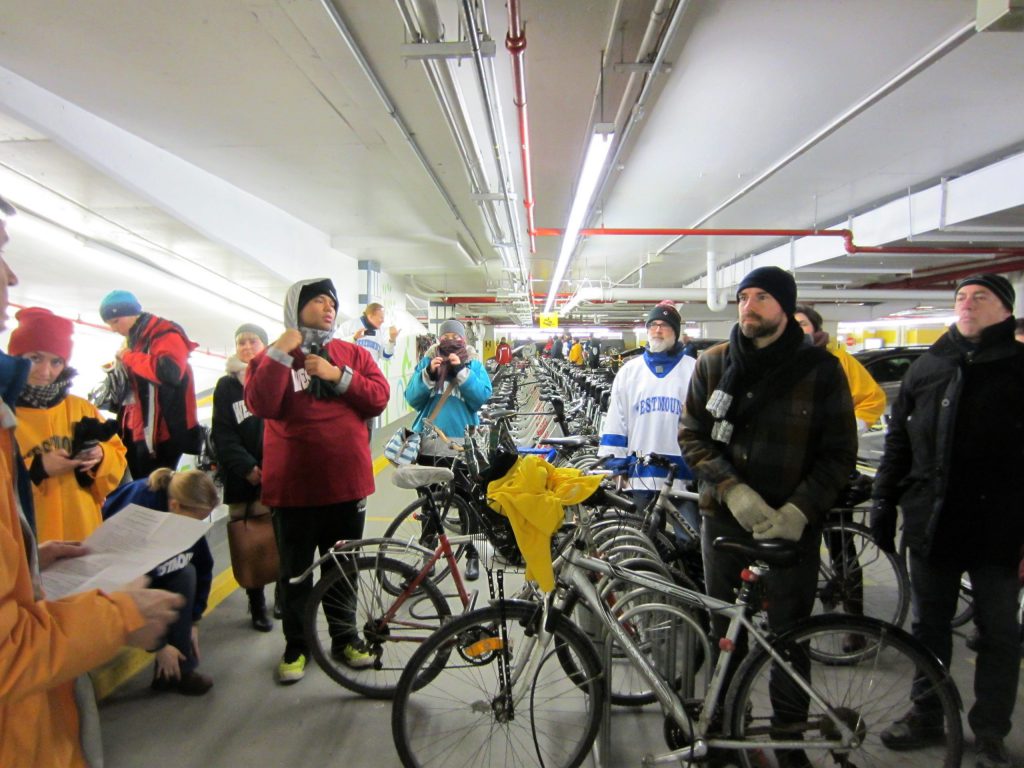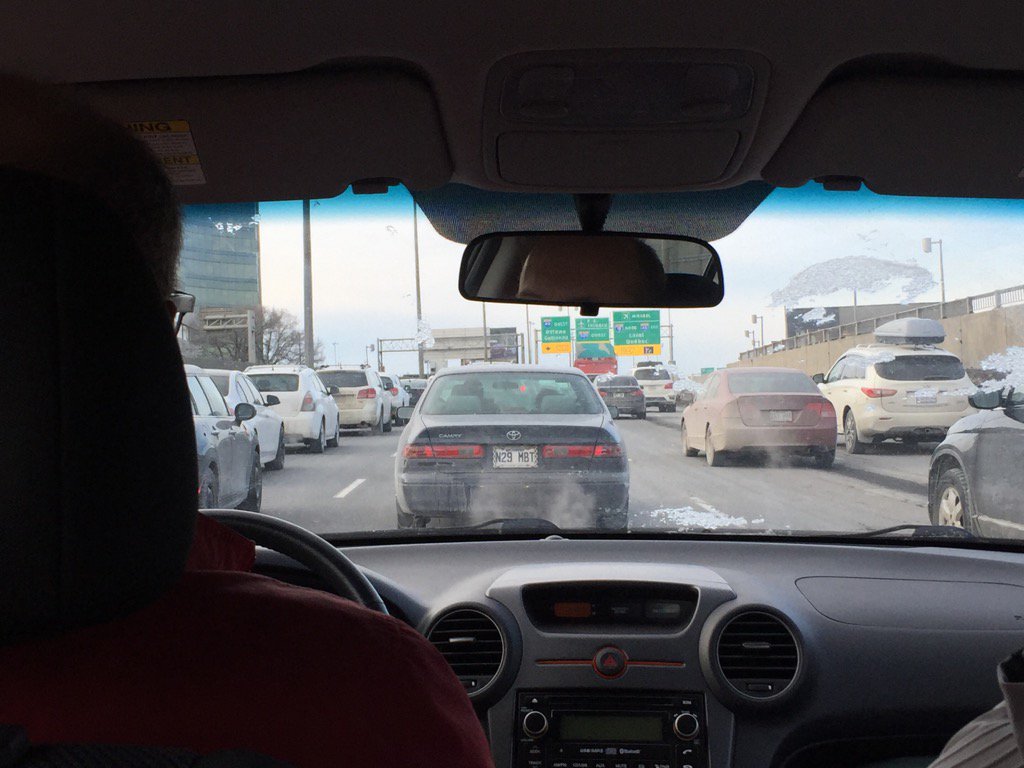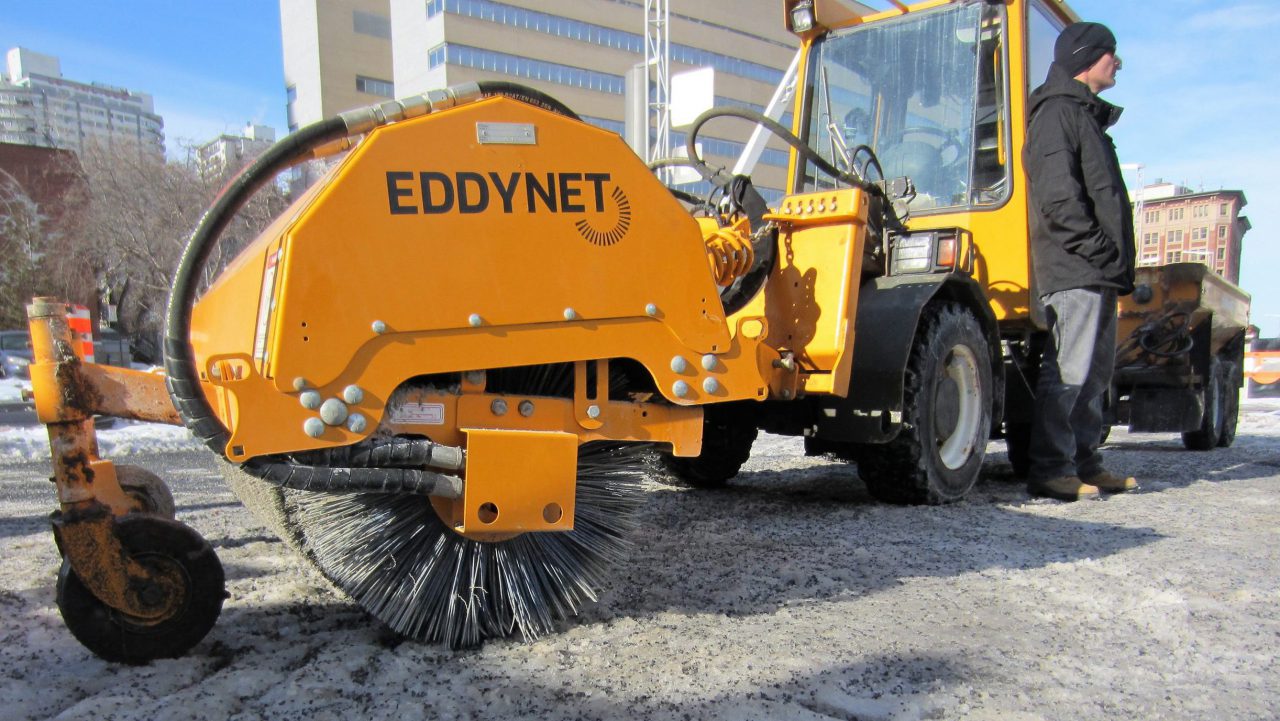February 8-10, 2017. Montréal was the host city for the 5th annual Winter Cycling Congress (WCC17). Did you know, this event was dreamed up in the living room of our very own Ottawa resident Hans Moor?
When winter cycling experts from all over the world come together so nearby, you have to take full advantage of the opportunity. Bike Ottawa was able to help send a delegation of four to WCC17, to learn, to network, to promote our organization, and to bring back some inspiration and knowledge to share with everyone at home. We’ll present some of this at our upcoming “Spring Bike Ottawa” event. For now, here’s a review of what we heard at WCC17.
A clean surface is one of the most important factors in whether people will ride in winter (and in the shoulder seasons, as well). This equipment would also work to prevent dangerous icy sidewalk conditions. We’ll be encouraging Ottawa to give this a try here, since we have a very similar winter climate to Montréal.
Sharing our perspective
Each of us gave a presentation touching on winter cycling. Our vice president, Heather Shearer, provided an overview of what Bike Ottawa does to support winter cycling, including Lights on Bikes, the Winter Bike Parade, and promoting the idea that winter biking is no different from doing anything else outside in winter. Past-president Hans Moor drew on his knowledge of the Dutch railways to discuss how cycling can combine with transit to be an attractive transportation choice all year. Board member and past VP Alex deVries took an in-depth look at Ottawa’s bike counters, and compared them with what we can learn from Strava Metro. Interestingly, a higher proportion of winter cyclists than summer cyclists are running Strava, meaning that Strava may be particularly well-suited to analyzing the needs of winter cyclists. At an evening PechaKucha session (20 slides, minimal text, 20 seconds each), Lana Stewart made the point that we tend to focus on the commute trip, even though most trips by bike are for purposes other than work. Inclusiveness was a recurring theme at WCC17, and Lana’s presentation underlined that message.

Maintenance
To anyone who already rides in winter, it seems painfully obvious that good maintenance is key to making winter cycling possible. To work well, a winter network needs to be connected, reliable (plowed predictably), and useful (plowed well, and plowed in time for the first trips of the day). To quote one presenter: “imagine if the Internet only made it 95% of the way to your house… you wouldn’t be watching very much Netflix“.
Many presenters made the point that there’s no reason cycling should be excluded from what we maintain in winter – that’s letting hard infrastructure go to waste, while also sending the message that bikes don’t belong in winter. Some Nordic cities are taking the lead on ensuring cycling is treated as a normal component of the transportation mix. For example: Oslo, Norway, has decided that their bike modal share should increase to 25% in 2025. They planned eight years to get there and early data tracking shows that they are on the right track, but this is still the ‘low hanging fruit’ phase. Oslo is experimenting with parking restructions before (!) the snow falls, so it is easy to remove the snow. However there are also issues, and not only in Oslo btw, with slush piling up in the bike lanes that run next to parked cars. But at least, Oslo city council has thrown its weight behind an ambitious program.
The city of Oulu in Finland has been maintaining winter bike infrastructure for a long time. Oulu choses for packing snow and doesn’t use salt. Actually they don’t use salt anywhere, except on some highways. Velo Quebec was promoting the use of brushes and brine. Oulu cleans all its pathways before the morning rush hour and so does the Netherlands.
Winter cycling: It’s about so much more than gear
Fat bikes featured prominently at WCC17. Montréal is close to Bromont, and the tourism industry in the area is clearly interested in the opportunities brought by fatbiking. However, our focus is on utility cycling more so than recreation, so with so many concurrent sessions, we didn’t attend the fatbiking talks. It was also refreshing to see that virtually none of the conference focused on studded tires, bike maintenance, low-viscosity grease, layering, barmitts, lighting, or ski goggles. In fact, most of the messaging around how to ride in winter was simply “wear what you’ve got” and “if you have a bike, you can winter ride” (as long as there’s maintenance).
Instead, winter cycling was framed in terms of the desirability of being a winter city that celebrates the season, in terms of equity for all people, and in terms of helping people cope with seasonal depression by staying connected and active all year. Winter cycling really isn’t about the mechanics and logistics of biking in snow – it’s about being accepted as a normal part of the transportation mix, and as a valued member of the community.
Political and social will
Cycling is not a mainstream way to travel in most of the world. Winter cycling is even more “out there”. So, how do we get the popular support? We were told that, as much as data can help make a rational case for winter cycling, data alone doesn’t sell the concept. We need to appeal to our inner caveman… an at-times irrational creature who seeks out social connections, feels emotions, makes snap judgements, and always enjoys a good story around the campfire. Storytelling is going to have to be part of the case we will need to make… people need to get to know winter cyclists as people just like them, who want to go to the same places. We’ll need to appeal to a sense of fairness and inclusiveness. Data will be there in the background to inform planning decisions, but the will to act in the first place is going to have to come from the gut.
Cycling in general is becoming more popular now that Ottawa is gradually building safer routes. We now also have a winter cycling network, which helps us getting around a bit better. We heard that a good summer network builds the momentum for also having a good share of people cycling in winter, so we are making progress, even if it can feel glacial at times (some winter cyclists unapologetically like puns).
Making connections
Perhaps the biggest advantage of a conference like this is the opportunity to interact with like-minded people. Being among 400 other winter cycling enthusiasts felt like a warm bath to Alex (at least according to Hans… is that a Dutch expression?). It was a chance for Hans to introduce Heather to some of his contacts in the world outside of Ottawa. Lana even got to meet the illustrator behind the “Ponto” cartoon series about a traffic cone. For all of us it was an opportunity to build relationships, including with our counterparts just across the river in Gatineau or across the ocean in Europe. Sometimes, there’s nothing quite like setting aside a big block of time to just get to know people, when you aren’t focused on a specific local issue.

And now, time to get to work…
Heading back to Ottawa, we discussed what we’d heard, and what we’ll try to implement in the days and months to come. Events like this are always inspiring idea generators. But the key now will be to turn ideas into action. We have some new approaches to try, some new projects to work on. As always, our organization relies on volunteer power, so we’ll be looking to all of you to help steer us towards a future where riding a bike in winter is no longer “crazy” “brave” or “bold”, but is simply a sensible way to travel.


